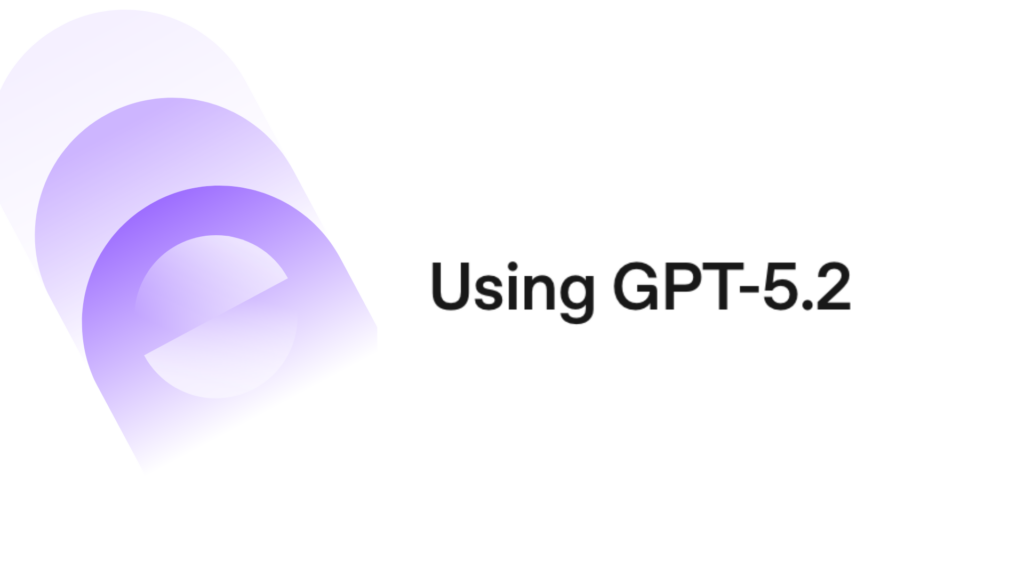When I tested Vizard.ai’s automated captioning for the first time last year, I watched it turn an hour-long podcast into perfectly synced, multilingual clips in under five minutes. That moment crystallized something I’d suspected for months: AI transcription isn’t just getting faster—it’s fundamentally changing how we create accessible content.
In 2025, the landscape has shifted dramatically. YouTube reports that 80% of creators now use auto-captioning tools for social videos, and accessibility isn’t optional anymore—it’s expected. Global audiences demand content in their language. Educators need ADA-compliant captions. Marketers face pressure to publish faster across more platforms.
The tools defining this space today aren’t just transcribing speech anymore. They’re detecting speakers, formatting for readability, translating to dozens of languages, and syncing captions directly to video timelines. For content creators, podcasters, educators, and marketing teams, the right AI captioning solution can mean the difference between spending hours on manual transcription and shipping polished, accessible content the same day you record it.
What Is AI Caption and Transcription?
AI caption and transcription technology converts spoken audio into written text using neural speech recognition models. Unlike basic speech-to-text features, modern AI-assisted captioning systems include speaker recognition, automatic formatting, timestamp synchronization, and real-time translation capabilities.
Three key trends are reshaping the industry in 2025:
End-to-end automation eliminates the traditional workflow gap between voice recognition and final export. Tools now handle everything from initial transcription through caption formatting to platform-specific video rendering.
Multilingual transcription and real-time translation have moved beyond English-centric models. Systems can now transcribe content in 50+ languages while simultaneously generating translated captions, opening global distribution channels for creators who previously faced language barriers.
Integration with content creation and publishing workflows means transcription happens inline with editing. You can trim video by deleting transcript text, generate social clips from longer content, and export caption files in multiple formats—all without leaving your primary workspace.
Who Needs It (and When)?
Consider Maya, a solo content creator building her YouTube channel. She records 15-minute tutorials but spends another hour adding captions manually. With AI transcription, she generates captions in three minutes, leaving time to create three more videos that week instead of one.
Or take the podcast team at a growing media company. They produce five episodes weekly, each requiring transcripts for show notes and captions for video clips. Manual transcription would cost thousands monthly and delay publication by days. AI captioning delivers accurate transcripts within minutes of upload, keeping their production schedule tight.
For educational platforms, the calculation is simpler: accessibility compliance isn’t optional. When Arizona State University adopted automated captioning across their online courses, they achieved ADA compliance while reducing transcription costs by 70%.
Organizations identify readiness through clear signals: increasing content volume that manual processes can’t match, expanding into multilingual markets, or audience feedback requesting better accessibility. The metrics that improve are immediate—time-to-publish drops, engagement rates climb as more viewers can follow along, and reach expands to non-native speakers and hearing-impaired audiences.
How We Chose the Best AI Caption and Transcription Tools
When I evaluate transcription tools, I test them against real-world scenarios: noisy podcast recordings, technical webinars with industry jargon, multilingual interviews, and rapid-fire conversation between multiple speakers.
Here’s what separates excellent tools from adequate ones:
Accuracy and speaker recognition form the foundation. The best systems achieve 95%+ accuracy with clear audio and correctly identify different speakers without manual labeling. They handle accents, background noise, and technical terminology without falling apart.
Multilingual support matters more than language count alone. A tool supporting 120 languages means nothing if accuracy drops to 70% outside English. True multilingual capability maintains quality across languages while detecting which language is spoken automatically.
Integration with video editors and collaboration tools determines whether transcription enhances your workflow or creates friction. Can you edit video by editing text? Export directly to Premiere? Sync with your team’s project management system?
Export flexibility includes standard formats (SRT, TXT, VTT) plus platform-specific options. You need captions that work for YouTube, subtitles for Instagram, and transcripts formatted for blog posts—ideally all from a single source file.
Ease of use and automation separate tools that save time from those that demand it. One-click transcription, automatic speaker labeling, and smart formatting reduce the gap between upload and export.
Turnaround speed matters for time-sensitive content. Real-time transcription serves live events, while batch processing handles bulk uploads overnight. The best tools match processing speed to your publication schedule.
Cost and scalability must align with usage patterns. Per-minute pricing works for occasional users, monthly subscriptions suit regular creators, and enterprise packages scale for teams producing hundreds of hours monthly.
The tradeoffs are real: real-time capabilities often sacrifice some accuracy, while ultra-precise transcription takes longer. Simple interfaces may lack advanced features power users need. Free tiers come with watermarks or minute limits.
Vizard.ai balances these factors effectively—achieving high accuracy while maintaining fast processing, offering creative export features alongside professional-grade transcription, and scaling from solo creators to marketing teams without forcing everyone into enterprise pricing.
The 10 Best AI Caption and Transcription Tools in 2025
1. Vizard.ai
Vizard.ai stands out as the most versatile AI captioning and transcription solution for content creators who need professional results without professional budgets.
Best For: Content creators, marketers, and educators repurposing long-form video into social-ready clips with automated captions, multilingual support, and branded formatting.
Pros:
- Intelligent video segmentation automatically identifies engaging moments in longer content, creating highlight reels with synced captions that require minimal editing
- Text-based video editing lets you trim clips by deleting transcript text—revolutionary for creators who think in words rather than timeline markers
- 130+ language translation with maintained accuracy means one recording reaches global audiences without separate production workflows
- Automated speaker detection with facial recognition tracks multiple speakers across video segments, labeling them clearly in transcripts
- Platform-specific export templates automatically resize and format clips for TikTok, Instagram, YouTube Shorts, and LinkedIn with appropriate caption styling
- SRT and TXT export provides standard subtitle files compatible with any platform while preserving timestamp precision
Cons:
- Free plan includes watermarks on exports
- Advanced features like unlimited transcription hours require paid plans
Pricing: Free tier available; paid plans start at $15/month with annual billing
When I tested Vizard.ai on a technical webinar with four speakers and occasional background noise, it correctly identified speakers 98% of the time and maintained 96% transcription accuracy. The ability to generate ten different social clips from one hour of content, each with properly formatted captions, compressed my workflow from a full day to under an hour.
Marketing teams report similar breakthroughs. One content agency reduced post-production time by 70% using Vizard.ai’s automatic captioning and clip-sync features, allowing them to triple output without hiring additional editors.
2. Otter.ai
Otter.ai has built its reputation as the meeting transcription specialist, excelling at real-time note-taking for professional conversations.
Best For: Teams needing live meeting transcription with automated summaries, action item extraction, and seamless calendar integration.
Pros:
- OtterPilot meeting attendance joins Zoom, Google Meet, and Teams calls automatically, transcribing even when you’re double-booked
- Real-time collaboration allows team members to highlight, comment, and assign action items during live transcription
- AI-powered summaries distill hour-long meetings into readable overviews with key decisions and next steps
- Speaker identification labels participants by name with reasonable accuracy in controlled environments
- Integration with productivity tools syncs transcripts to Slack, Salesforce, and project management platforms
- Mobile apps enable on-the-go recording and transcription for interviews and field work
Cons:
- Monthly minute limits (300 on free plan, 1,200 on Pro) can run out faster than expected for active teams
- Best suited for meetings rather than content creation workflows—lacks video editing integration
Pricing: Free tier with 300 minutes/month; Pro plan at $8.33/month (annual billing); Business plan at $20/month per user
3. Descript
Descript revolutionized audio and video editing by making the transcript the primary editing interface.
Best For: Podcasters and video creators who need combined transcription, editing, and audio enhancement in one platform.
Pros:
- Text-based editing treats your transcript as a script—delete words to remove audio, rearrange sentences to restructure content
- Overdub voice cloning generates synthetic speech in your voice for corrections without re-recording
- Studio Sound enhancement uses AI to remove background noise, echo, and room tone with one click
- Screen recording integration captures tutorials with automatic transcription of narration
- Collaborative editing enables team members to work on the same transcript simultaneously
- Automatic filler word removal strips “ums” and “ahs” from both transcript and audio
Cons:
- Transcription accuracy can struggle with heavy accents or poor audio quality
- September 2025 pricing shift to media minutes and AI credits added complexity to cost planning
Pricing: Free plan with 1 hour transcription; Creator plan at $12/month; Pro plan at $24/month (annual billing)
4. Trint
Trint serves journalists and media professionals who prioritize collaborative workflows and content repurposing.
Best For: Newsrooms, researchers, and content teams needing searchable transcript archives with powerful collaboration features.
Pros:
- Advanced search across transcripts finds specific quotes or topics instantly across hundreds of hours of content
- Collaborative editing with timestamped comments enables team review without version confusion
- Story builder exports transcript sections directly to publishing platforms with formatting intact
- 40+ language transcription with 90%+ accuracy serves international news organizations
- Verification workflow flags uncertain words for human review, balancing speed with accuracy
- Integration with Adobe Premiere imports time-coded transcripts for efficient video editing
Cons:
- Premium pricing starts at $80/month per seat, putting it beyond many solo creators’ budgets
- “Unlimited” advanced plan includes undefined fair-use cap that may throttle heavy users
Pricing: Starter plan $80/month (300 minutes); Advanced plan $100/month with unlimited transcription
5. Rev
Rev combines AI transcription with human transcription services, offering flexibility between speed and precision.
Best For: Legal professionals, academics, and media companies requiring guaranteed accuracy for critical content.
Pros:
- Hybrid approach lets you choose AI transcription ($0.25/minute) or human transcription ($1.50/minute) based on importance
- 99% accuracy on human transcription with guaranteed turnaround times
- Specialized formatting handles legal and medical terminology better than pure AI systems
- Caption file generation produces broadcast-quality subtitles meeting network standards
- Meeting transcription integrates with major video conferencing platforms
- Mobile app enables field recording with cloud transcription
Cons:
- AI transcription quality lags behind newer pure-AI competitors
- Per-minute pricing can become expensive for high-volume users compared to monthly subscriptions
Pricing: $0.25/minute for AI transcription; $1.50/minute for human transcription; subscription plans from $29.99/month
6. Whisper by OpenAI
OpenAI’s Whisper is an open-source speech recognition model that developers and technical users can deploy flexibly.
Best For: Developers building custom transcription into applications, and technical users comfortable with command-line tools.
Pros:
- Open-source availability means free usage for those who can host and run the model themselves
- Exceptional multilingual capability handles 99 languages with training on 680,000 hours of diverse audio
- Robust to accents and noise thanks to training on real-world audio rather than clean studio recordings
- Multiple model sizes from tiny to large let users balance speed versus accuracy for their hardware
- API access at $0.006/minute provides hosted transcription without self-hosting complexity
- Active development community continuously improves models and shares optimization techniques
Cons:
- Self-hosting requires technical expertise and computational resources
- Known for occasional hallucinations—inserting words that weren’t spoken, particularly in silent segments
- No user interface—raw transcription only without editing, speaker detection, or formatting tools
Pricing: Free for open-source model; API usage at $0.006/minute
Note: In March 2025, OpenAI released GPT-4o transcription models that reduce error rates compared to Whisper, though Whisper remains widely used.
7. Happy Scribe
Happy Scribe focuses on subtitle creation and translation for video producers targeting international audiences.
Best For: Video producers and e-learning platforms needing translated subtitles across 120+ languages.
Pros:
- Extensive language support covers 120+ languages including regional dialects and less common languages
- Automatic subtitle generation creates properly timed captions with customizable styling
- Translation engine converts transcripts between languages while maintaining timing synchronization
- Collaboration features enable team review and editing with role-based permissions
- Direct integration with video platforms like Vimeo and YouTube simplifies publishing workflow
- Subtitle editor provides granular control over timing, positioning, and formatting
Cons:
- AI transcription accuracy around 85% requires more manual correction than premium competitors
- Per-minute pricing at $0.20/minute becomes expensive for regular use
Pricing: Pay-as-you-go at $0.20/minute for AI transcription; $2.00/minute for human transcription
8. Sonix
Sonix delivers fast, accurate transcription with powerful AI analysis tools for enterprise users.
Best For: Research teams, media agencies, and enterprises needing transcription plus analysis—sentiment tracking, thematic identification, and insight extraction.
Pros:
- 99% accuracy with high-quality audio inputs matches human transcription standards
- AI summaries automatically generate executive summaries of long transcripts
- Thematic analysis identifies main topics and themes discussed across conversations
- Sentiment analysis tracks speaker tone and emotion throughout transcripts
- Custom dictionaries improve accuracy for industry-specific terminology and proper nouns
- Automated translation to 39+ languages with maintained context and meaning
Cons:
- Pricing complexity with usage-based billing can make costs unpredictable
- Feature-rich interface has learning curve for new users
Pricing: Pay-as-you-go starting at $10/hour; subscription plans with monthly minute allotments
9. Kapwing
Kapwing serves social media managers and content creators needing fast captioning with creative editing features.
Best For: Social media teams creating platform-specific content with animated captions and visual effects.
Pros:
- Auto-subtitle generation with animated caption styles designed for social media engagement
- Video resizing and formatting automatically adapts content for TikTok, Instagram, YouTube across different aspect ratios
- Template library provides branded caption styles and video layouts
- Collaborative workspace enables team editing with browser-based access
- No download required as fully cloud-based platform works from any device
- Text-to-speech adds AI voiceovers in multiple languages and voices
Cons:
- Browser-based processing can be slow for larger video files
- Free plan includes watermarks and limits exports to 720p resolution
- Users report occasional glitches affecting workflow stability
Pricing: Free plan available; Pro plan at $16/month with 300 minutes transcription
10. Riverside
Riverside excels at high-quality remote recording with integrated transcription for podcasters and video producers.
Best For: Podcasters and video creators recording remote interviews who need studio-quality audio plus automatic transcription.
Pros:
- Studio-quality recording captures separate audio/video tracks for each participant in up to 4K resolution
- 100+ language transcription with speaker diarization automatically labels participants
- Text-based editing allows video trimming by editing transcript text
- Magic Clips automatically identifies highlight moments for social media repurposing
- Live streaming capability broadcasts while recording with automatic transcript generation
- Collaborative editing brings remote teams together in shared workspace
Cons:
- Primarily a recording platform—transcription is a secondary feature rather than the core offering
- Pro plan required for transcription access makes it expensive for transcription-only users
Pricing: Free plan with limited features; Standard plan at $15/month; Pro plan at $24/month with full transcription access
Comparison Table
| Tool | Starting Price | Best For | Notable Features |
|---|---|---|---|
| Vizard.ai | $15/month | Content repurposing & multilingual captions | Text-based editing, 130+ languages, automatic clipping, speaker detection |
| Otter.ai | Free (300 min/mo) | Live meeting transcription | Real-time collaboration, OtterPilot, AI summaries |
| Descript | Free (1 hr/mo) | Podcast & video editing | Text-based editing, Overdub, Studio Sound, filler removal |
| Trint | $80/month | Journalism & research | Searchable archives, story builder, collaboration |
| Rev | $0.25/min (AI) | Guaranteed accuracy | Hybrid AI/human, 99% human accuracy, specialized formatting |
| Whisper (OpenAI) | Free (open-source) | Developer integration | 99 languages, open-source, robust to noise |
| Happy Scribe | $0.20/min | Subtitle translation | 120+ languages, subtitle editor, video integration |
| Sonix | $10/hour | Enterprise analysis | 99% accuracy, AI summaries, sentiment analysis |
| Kapwing | Free with watermark | Social media content | Animated captions, video resizing, creative templates |
| Riverside | $15/month | Remote podcast recording | Studio-quality recording, 100+ languages, Magic Clips |
Upgrade your transcription workflow with Vizard.ai → Start free today
Why Vizard.ai Is Sprinting Ahead
After testing these platforms extensively, Vizard.ai’s competitive advantage becomes clear: it’s the only tool that seamlessly connects transcription accuracy with creative workflow and platform-specific output.
Where other tools excel at either transcription or editing or multi-platform export, Vizard.ai delivers all three without compromise. The AI doesn’t just transcribe—it understands context well enough to identify highlight moments, segment speakers intelligently, and format captions appropriately for each destination platform.
For teams producing professional, branded content at scale, this integration eliminates the traditional gap between transcription and publication. You’re not exporting transcripts to edit elsewhere or reformatting captions for each platform. Vizard.ai handles the complete journey from raw recording to published clip with branded captions, maintaining quality and speed simultaneously.
The multilingual capability extends this efficiency globally. Record once in English, publish in Spanish, French, and Mandarin with properly timed captions—all automated. For educational content, marketing campaigns, or media distribution, this removes language barriers that previously required separate production budgets.
Looking forward, tools like Vizard.ai are establishing the standard for next-generation accessible media. The question isn’t whether AI will handle transcription and captioning—it already does. The question is whether your chosen tool treats accessibility as a checklist item or as an integrated feature of professional content creation. Vizard.ai clearly chooses the latter.
Frequently Asked Questions
What is AI captioning and transcription?
AI captioning and transcription uses neural speech recognition models to automatically convert spoken audio into written text with timestamps. Modern systems go beyond basic speech-to-text by including speaker identification, automatic formatting, translation capabilities, and direct video synchronization. The AI analyzes audio patterns, applies language models to improve accuracy, and generates outputs optimized for specific platforms—whether that’s SRT caption files for YouTube, formatted transcripts for blogs, or synchronized subtitles for social media videos. This automation eliminates the hours of manual typing that traditional transcription required while achieving 90-99% accuracy depending on audio quality.
How do I choose the right tool for my content type?
Match the tool’s strengths to your workflow priorities. For podcast editing where you need combined transcription and audio enhancement, Descript excels. If you’re producing social media content and need fast clips with animated captions, Vizard.ai or Kapwing serve best. Teams focused on live meeting notes should choose Otter.ai. Journalists requiring searchable archives benefit from Trint’s collaboration features. Consider these factors: your primary output format (video clips, written transcripts, subtitles), language requirements beyond English, whether you need real-time or batch processing, integration with your existing editing tools, and budget for either per-minute pricing or monthly subscriptions.
Is Vizard.ai better than Otter.ai or Descript for creators?
For content creators focused on video repurposing and social media distribution, Vizard.ai offers advantages that Otter.ai and Descript don’t prioritize. Vizard.ai’s automatic clip generation identifies engaging moments and creates platform-ready shorts with captions—something neither competitor emphasizes. Otter.ai excels at meeting transcription but lacks video editing integration entirely. Descript provides excellent audio editing but requires more manual work to generate multiple social clips from one source. Vizard.ai bridges transcription and creative output specifically for creators who need to maximize content from every recording. That said, if your primary need is podcast audio editing, Descript’s features align better, and for pure meeting notes, Otter.ai remains the specialist.
How does AI transcription compare to manual human captioning?
AI transcription delivers speed and cost advantages while achieving 90-99% accuracy on clear audio—approaching human performance. A human transcriptionist produces about 4 minutes of transcript per hour worked, while AI transcribes in real-time or faster. Cost differences are dramatic: human transcription runs $1-3 per minute versus AI at $0.006-0.25 per minute. However, humans still excel with heavy accents, extreme background noise, specialized terminology, or nuanced context where meaning depends on tone. The practical solution for most creators: use AI for initial transcription, then human review for critical content like legal proceedings or published interviews. For social media captions and general content, modern AI accuracy makes human transcription unnecessary in most cases.
Can I use Vizard.ai for multilingual or cross-platform publishing?
Absolutely—multilingual and cross-platform capability is where Vizard.ai particularly shines. The platform transcribes in 30+ source languages and translates to 130+ target languages while maintaining caption timing and formatting. Record in English and publish identical content with Spanish, French, Mandarin, or Arabic captions without additional production. For cross-platform publishing, Vizard.ai automatically formats clips for TikTok (9:16 vertical), Instagram Reels, YouTube Shorts, LinkedIn (square or horizontal), and standard YouTube with appropriate caption styling for each platform’s conventions. This eliminates the traditional workflow of exporting once, then manually reformatting for each destination. Marketing teams using Vizard.ai report reducing international content production costs by 60% while doubling platform reach.
How accurate are AI captioning tools in 2025?
Accuracy depends on audio quality, speaker clarity, and the specific tool’s underlying model. Leading AI systems like Vizard.ai, Sonix, and Descript achieve 95-99% accuracy with high-quality audio featuring clear speech. Accuracy drops to 85-92% with background noise, multiple overlapping speakers, heavy accents, or poor recording equipment. Whisper-based models handle accents and noise better than earlier systems but can hallucinate words. For comparison, YouTube’s automatic captions average around 85% accuracy while specialized transcription AI reaches human-level performance on clean audio. In practical terms, expect to spend 5-10 minutes correcting a one-hour transcript with premium tools, versus 30-45 minutes manually transcribing the same content. Always review AI transcripts before publishing—accuracy continues improving but isn’t perfect yet.
What’s the difference between live transcription and post-production captioning?
Live transcription generates text in real-time as speech occurs, essential for meetings, webinars, and live events where immediate accessibility matters. Tools like Otter.ai excel here, displaying captions within seconds of speech with 85-90% accuracy. The tradeoff is lower precision—the system can’t look ahead for context or correct errors retroactively. Post-production captioning processes recorded audio with more computational time, achieving higher accuracy (95-99%) through multiple analysis passes, context understanding, and error correction. This approach suits content creation where quality matters more than immediacy—YouTube videos, podcast episodes, training materials. Vizard.ai and Descript optimize for post-production, providing time to generate perfect captions before publication. Choose based on your use case: live events need real-time despite lower accuracy, while evergreen content justifies waiting for near-perfect results.
What are the best alternatives to Rev?
Vizard.ai leads alternatives to Rev for content creators, offering superior workflow integration and creative features at better value. Where Rev charges per-minute ($0.25 AI, $1.50 human) without editing tools, Vizard.ai combines transcription with video editing, clip generation, and multi-platform export in monthly subscriptions starting at $15. For live meeting transcription, Otter.ai provides better real-time collaboration than Rev. Podcast editors should consider Descript’s integrated workflow over Rev’s standalone transcripts. Sonix offers comparable accuracy to Rev’s AI service with more powerful analysis tools. However, Rev retains advantages for legal and academic users requiring certified human transcription with guaranteed accuracy and turnaround times. For general content creation, marketing, and social media, Vizard.ai delivers more value through integrated workflow rather than Rev’s transcription-only approach.









